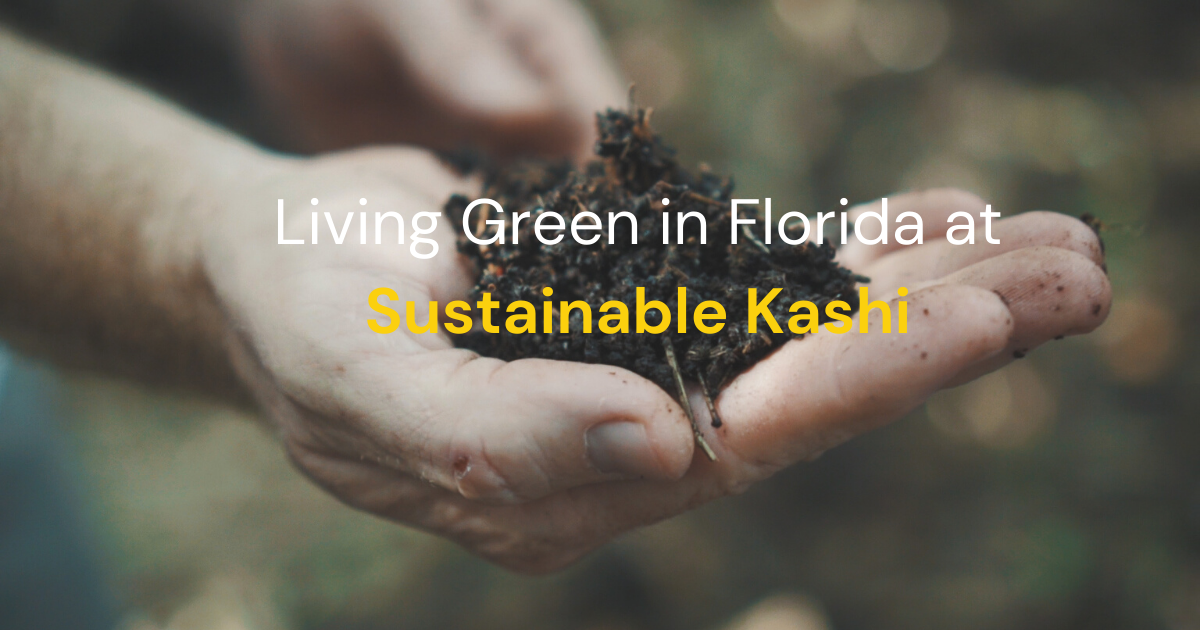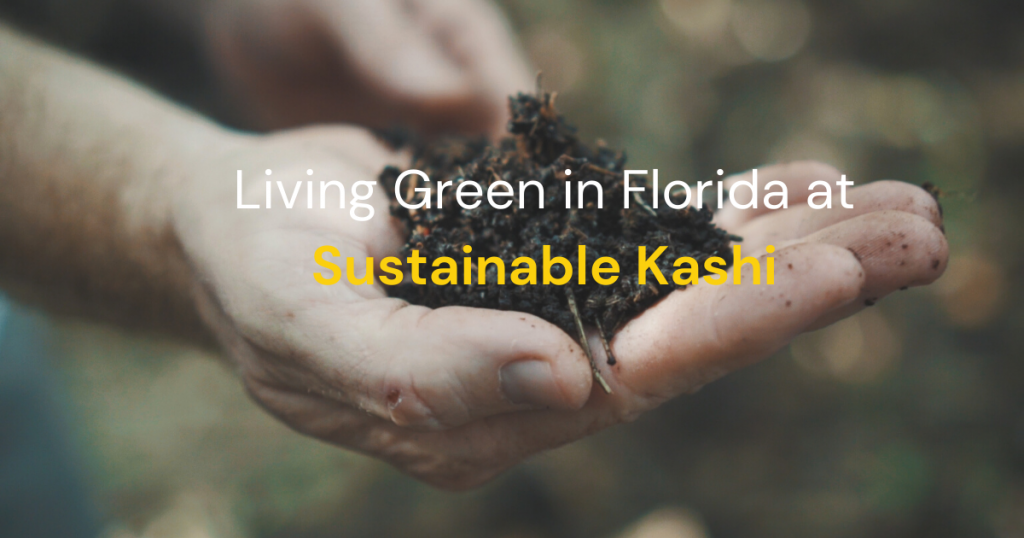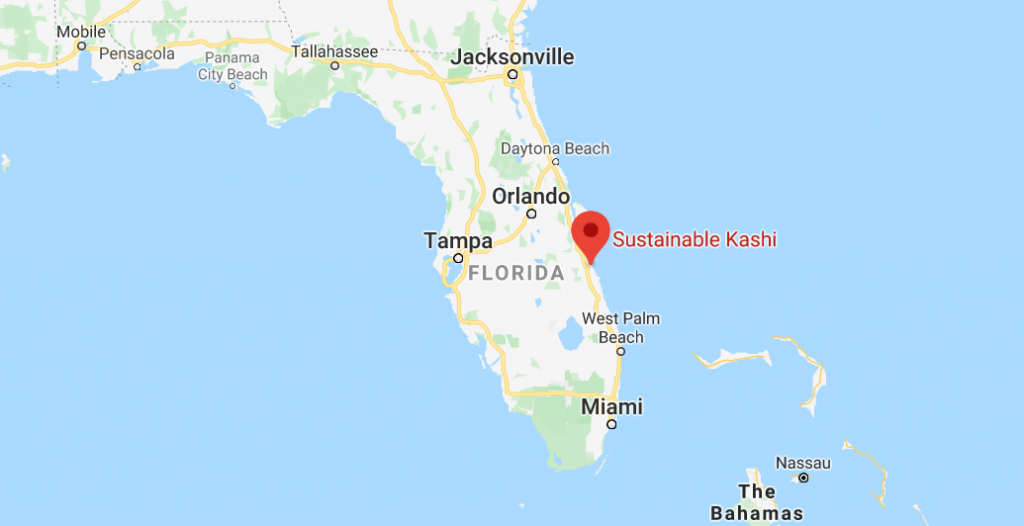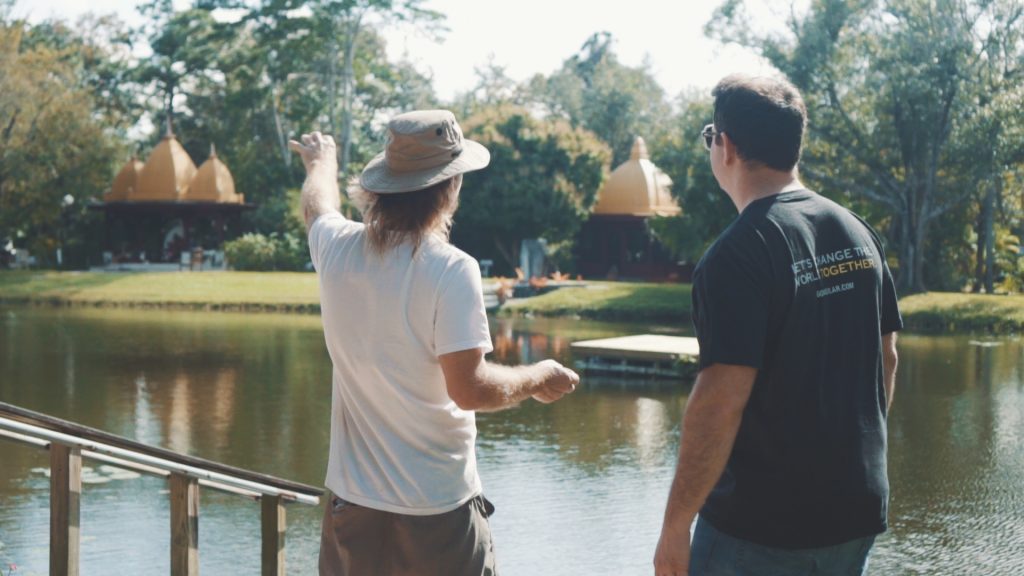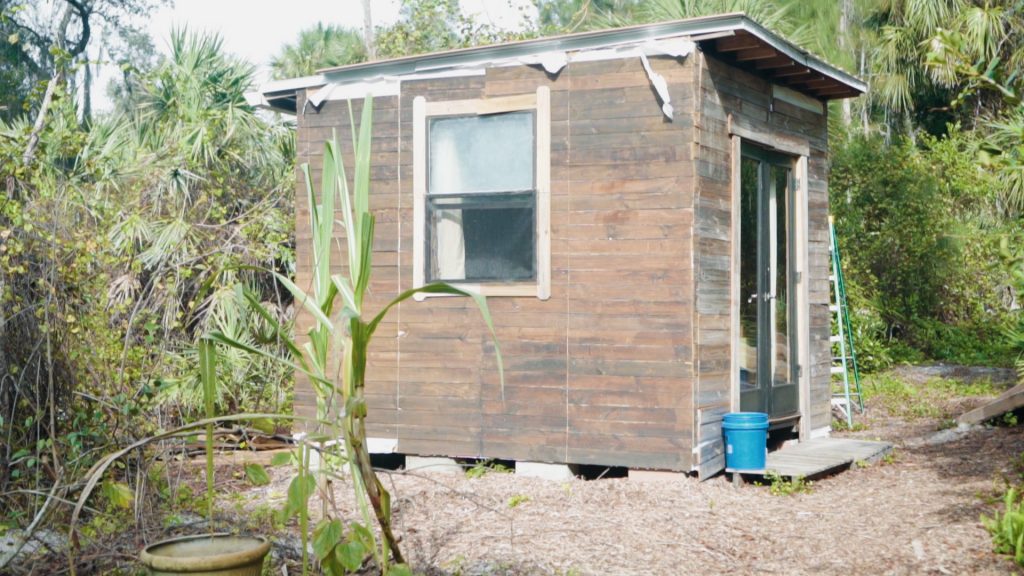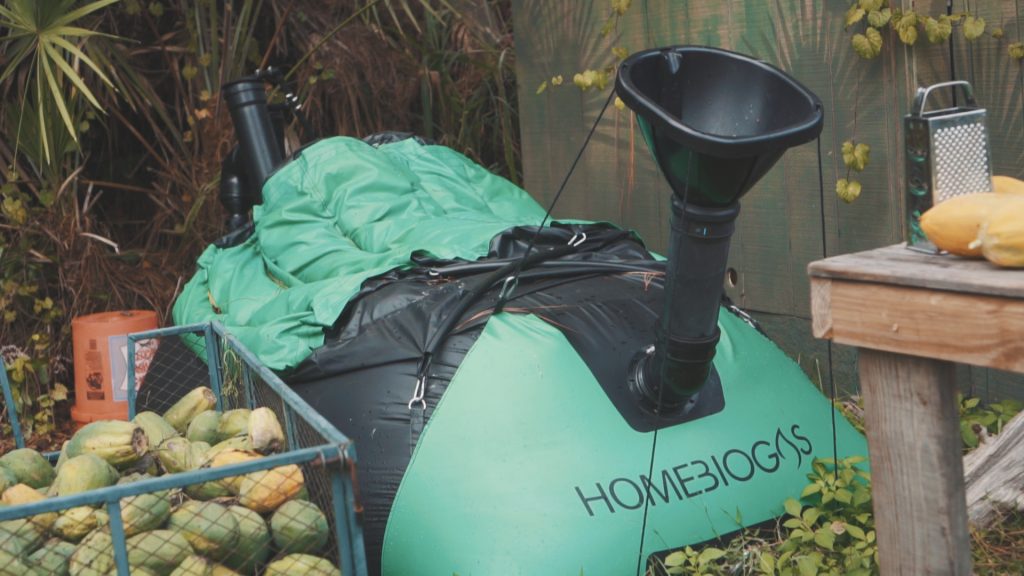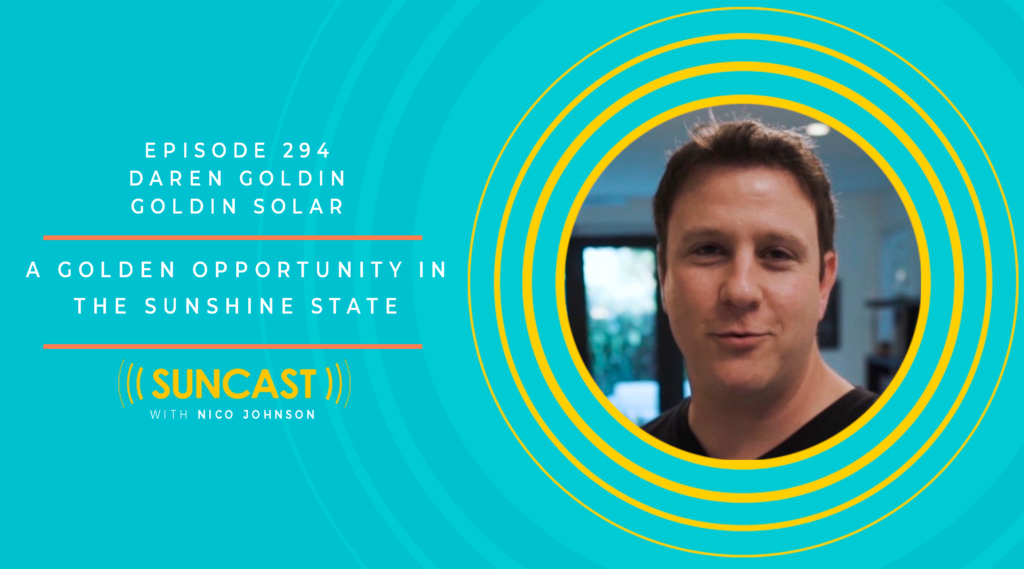When we decided to make a trip to Sustainable Kashi to film an episode of the Green Stuff with Kashi director Terry Meer, I was expecting to learn about building community and organic gardening. I definitely did, but I was amazed to learn just how much deeper it really goes. Check out the episode on YouTube or read on to learn about how Sustainable Kashi uses permaculture and biomimicry to create integrated, regenerative systems of land, spirit, and culture here in Central Florida.
About Sustainable Kashi
Sustainable Kashi is an 80-acre intentional community, permaculture farm, and retreat center in Sebastian, Florida (that’s in between Vero Beach and Palm Bay near the Atlantic coast). Sustainable Kashi is currently directed by Terry Meer, who we joined for a tour in January 2020.
Sustainable Kashi’s History
Kashi was founded with five acres in 1976 by Ma Jaya. Her vision was to create a space where people could come together, no matter their background, religion or beliefs, with the foundation of love and kindness. But it’s more than just a gathering place. Kashi is a space where anyone can come together to share, live, and grow in community.
Six years ago (so, in 2014), the community at Sustainable Kashi decided to take this vision and bring it to the soil on the land. Terry Meer shares:
“We took the spiritual greatness they were doing and brought it into the soil, into mother Earth. We have created a bridge between ecology and spirituality, which is a really beautiful way to create an abundance of life and manifestation.”
Six years later, they have nine different gardens, over 300 fruit trees, an off-grid ecovillage, and lots of other demonstration sites where people can get hands-on experience with different sustainable, regenerative systems. The goal is that people can take this knowledge back to their own land and their own communities to spread these regenerative systems throughout society.
The entire site is now 80 acres, and Terry told us they are looking to expand.
Permaculture and Biomimicry at Sustainable Kashi
Sustainable Kashi uses the principles of permaculture and biomimicry to design their land and social systems. Permaculture, says Terry, “is a design science using biomimicry or copying the processes of nature to create abundant systems.” It’s all about building positive relationships between the different elements of the system, whether that be different plants in your garden, people in your community, or buildings on your site.
Terry used the example of the bananas to explain permaculture a bit more:
“If you look at a mountaintop, all the fertility is at the base where everything runs off. All the minerals, the organic matter all down in a beautiful little gully. So what we’ve done is observe the land, found the gully, and put the right plant [bananas] at the right place.”
Makes sense– put things where they can benefit from the conditions that are already there and contribute to their surroundings in a meaningful way. But it gets better:
“We can copy the same strategy in social environments. If you have a person that loves to be in the gully, or a musician that loves to play for people, put them in the right place and they will flourish so much more. So we just get to practice in the garden, but really, the true yield is in our daily lives.”
To see how permaculture is put into practice here in Central Florida, we took a tour of the different systems they have in place.
The Permaculture Gardens
The gardens are where they grow the majority of their vegetables. Terry told us that last year they grew about 4,000 pounds of food in the garden during their peak season from October-June.
When we were there, the garden had a huge variety of produce: tomatoes, swiss chard, dinosaur kales, curly kales, red Russian kales, green beans, tatsoi, carrots, eggplants, beets, dill, cilantro, and flowers they use for our pujas. When it’s not peak gardening season, they produce other food in abundance: fruit. Terry told us that the mangoes and avocados produce thousands of pounds of food during the summer.
The permaculture system is very process-oriented rather than result-oriented. Each system feeds into the next. The most amazing thing to me about the gardens is just how much thought goes into every step of the process. Terry told us, “The more time you spend on the design, the less time you spend redoing things.”
The Off-Grid Ecovillage
Next we visited the off-grid ecovillage. Terry told me they use the ecovillage to host 35 volunteers all over the world. They come to learn how to grow their own food and catch their own energy and water.
The tiny homes are a central feature of the ecovillage. Each one was built with less than $1,000. The ecovillage is also planted with food: sugarcane, starfruit, mango, lemongrass, and citronella grass. One feature I was really excited about was the biodigester in the kitchen.
Biodigester
The ecovillage also has a kitchen area with stoves running on methane gas produced on-site with a biodigester. A biodigester is basically a big bag filled with microbes that convert waste into natural gas (methane). The natural gas can be used for heating or cooking.
The biodigester takes about three pounds of food per day. To demonstrate, Terry used fallen papayas. “Papaya is wonderful because they are really high in sugar, this system really loves sugar. Here we have a papaya we might not eat because it’s past its prime or moldy. We just take this, feed it right in, and we add the same amount of water. As we do that, you’ll notice affluent comes out on the other side. That fluid is a really high-nitrogen fertilizer. We use it in the gardens to feed the plants. So we have a fully closed-loop system– getting rid of fruit drop, feeding the cooking stove, and feeding the plants.”
The gas generated by the digester is fed into the kitchen area to a propane stove. The stove can run for about an hour on a full bag of gas. That’s some good, clean energy! If they run out, they do have a propane backup, but it wasn’t even hooked up during our visit. Terry told us they don’t have to use it often.
The Compost
The next demonstration system Terry showed us was the compost. Terry told us about the benefit of making your own compost compared to buying it at Home Depot or another box store. It’s all about the life in it:
“The life is what feeds the plants. If you have an unhealthy plant you are susceptible to pests. It’s like a body being able to fight off a cold. The best pest deterrent is healthy soil.
“If we lose a plant to pests, that’s a conversation I’m having with the earth. I ask, ‘What was it about the environment that made the plant weak enough to fall to the pest?’ Instead of ‘What can I spray?’ Just spraying pesticides is a linear process that creates a toxic environment. Which is more of the same problem, more pests, unhealthy soil, and soil degradation.”
Their compost system is pretty simple. Compost is collected in piles and then covered with carbon material. After three months, they take off the top carbon layer and put the compost into the sifter. The compost is sifted to get a nice, clean, even compost. All the bigger pieces, filled with worms and bugs that get left on the sifter just go back on top of another pile as an inoculant.
Getting Involved at Sustainable Kashi
Bringing more people into places like Sustainable Kashi is really what it’s all about. Next I really wanted to know how people can get involved. Terry told me they have basically three ways that people can get involved, and people interested in permaculture and regenerative living are attracted to Kashi from all over Florida and all over the world.
The first level of involvement is their personal retreat program. This is a really open-ended way of exploring Kashi. Visitors can come to visit for a few days or a weekend, explore the temples, go to the river, go kayaking or really do whatever they’d like around the property.
For a little more structure, they have a three-week internship program where people stay in the ecovillage. The goal of this program is for participants to really learn more about how all the life-support systems work together. Interns learn to grow and harvest their own food, catch their own solar energy and rainwater.
Finally, for those who are really interested in integrating this spiritual form of permaculture in their lives, they can buy their own plot of land and make Kashi their home.
If you’re interested in making a visit to Sustainable Kashi in Sebastian, Florida, you can go to their website for a list of current event offerings. They have interfaith events on Sundays, a monthly farmer’s market, a permaculture design course and other regular events.
Sustainable Kashi: A Permaculture Gem in Florida
At the end of the day, Sustainable Kashi was far more than I expected. I came in expecting organic gardening, eating food you eat themselves, living together. But to see the integrated nature of the system and how it all connects, and the idea that there is no waste blew my mind. There are a lot of lessons that anyone could learn here to apply to their own lives, whether they live in the city like me or out on their own homestead. It’s truly a cradle to cradle system. We’ll definitely be back.
Other Permaculture Resources in Florida
Orlando Permaculture
South Florida Permaculture Resource Center
Grow Permaculture
